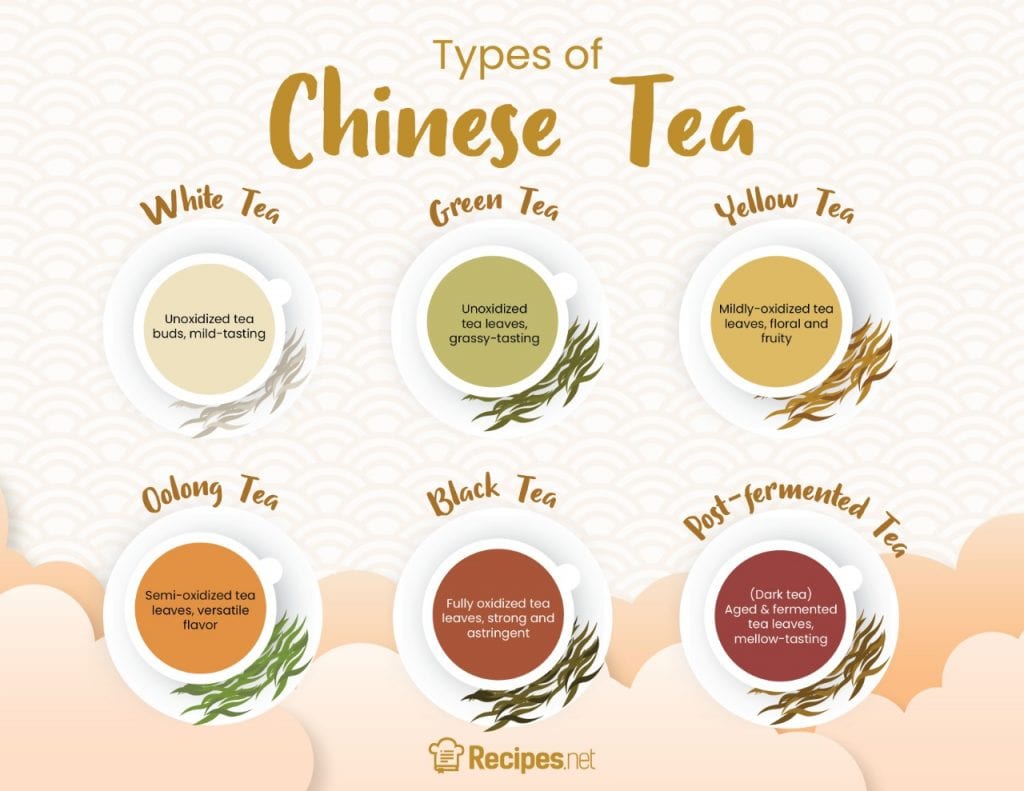The longevity of Chinese tea depends on several factors, including the type of tea, how it is stored, and the conditions in which it is kept. Chinese tea is a diverse category, encompassing various types such as green tea, black tea, oolong tea, white tea, and pu-erh tea, each with its own characteristics and shelf life.
1. Types of Chinese Tea:
- Green Tea: Green tea is known for its freshness and delicate flavors. It undergoes minimal oxidation during processing, preserving its vibrant qualities. Generally, green tea is best consumed within 6-12 months of purchase to experience its optimal taste and aroma. However, high-quality green teas may remain enjoyable for up to 18 months if stored properly.
- Black Tea: Black tea undergoes full oxidation, resulting in a robust flavor profile. Properly stored black tea can last for 2-3 years. However, its taste may change over time, and it is recommended to consume it within the first 1-2 years to enjoy its peak flavor.
- Oolong Tea: Oolong tea falls between green and black tea in terms of oxidation. It often features complex flavors that can evolve over time. Oolong tea can last 1-3 years, with the more heavily oxidized varieties having a longer shelf life. High-quality oolong teas may develop richer flavors after aging.
- White Tea: White tea is the least processed among Chinese teas, and it tends to have a delicate and subtle taste. While it can last 1-2 years, some white teas, especially those made from buds, may develop more nuanced flavors with age.
- Pu-erh Tea: Pu-erh is a unique category of fermented tea that can improve with age. Raw pu-erh and ripe pu-erh have different aging characteristics. Raw pu-erh can age for decades, with some connoisseurs appreciating the changes in flavor and aroma over time. Ripe pu-erh is already fermented and has a shorter aging potential, typically up to 10-15 years.
2. Storage Conditions:
- Humidity: Exposure to moisture can lead to the growth of mold and spoil the tea. It’s crucial to store Chinese tea in a dry environment to maintain its quality. Humidity levels should ideally be below 70%.
- Light: Tea should be kept away from direct sunlight, as UV rays can degrade the quality of the leaves. A dark, cool place is preferable for storage.
- Air: Tea absorbs odors easily, so it is important to store it in airtight containers to prevent the exchange of flavors with surrounding elements.
- Temperature: Tea should be stored in a cool environment, away from extreme temperature fluctuations. Room temperature or slightly below is ideal.
3. Factors Affecting Longevity:
- Quality of Tea: Higher quality teas, with their delicate flavors and aromas, may deteriorate more rapidly than lower quality teas. However, some premium teas, such as aged pu-erh or certain oolongs, are prized for their ability to improve with age.
- Processing Methods: The method used to process the tea leaves can influence their shelf life. For example, fully oxidized teas like black tea tend to last longer than minimally processed green teas.
- Storage Containers: The choice of storage containers can impact the longevity of Chinese tea. Porous containers, such as those made of unglazed clay, can absorb excess moisture and contribute to the aging process, particularly in the case of pu-erh tea.
4. Signs of Tea Deterioration:
- Loss of Aroma: One of the first indicators of tea deterioration is a loss of its characteristic aroma. Fresh teas are known for their fragrant notes, and a decline in aroma suggests a decrease in quality.
- Faded Color: The vibrant colors of certain teas, especially green and white teas, can fade over time. This change may be subtle but can impact the visual appeal of the tea.
- Stale or Flat Taste: As tea ages, its flavors may become flat or stale. The vibrant and complex taste profile that is characteristic of fresh tea may diminish.
- Mold or Unpleasant Odors: If tea is exposed to excessive moisture or improper storage conditions, it may develop mold or absorb undesirable odors from its surroundings.
5. Conclusion:
In conclusion, the longevity of Chinese tea varies depending on the type of tea, storage conditions, and other factors. While some teas are best consumed shortly after purchase to experience their peak freshness, others, like certain pu-erh teas, are intentionally aged to enhance their flavors. Proper storage in a cool, dark, and dry environment is crucial for maintaining the quality of Chinese tea.
Understanding the characteristics of different types of tea and monitoring signs of deterioration can help tea enthusiasts enjoy their favorite brews at their best. Ultimately, the appreciation of tea involves a delicate balance between capturing its youthful vibrancy and savoring the unique qualities that time can impart.
